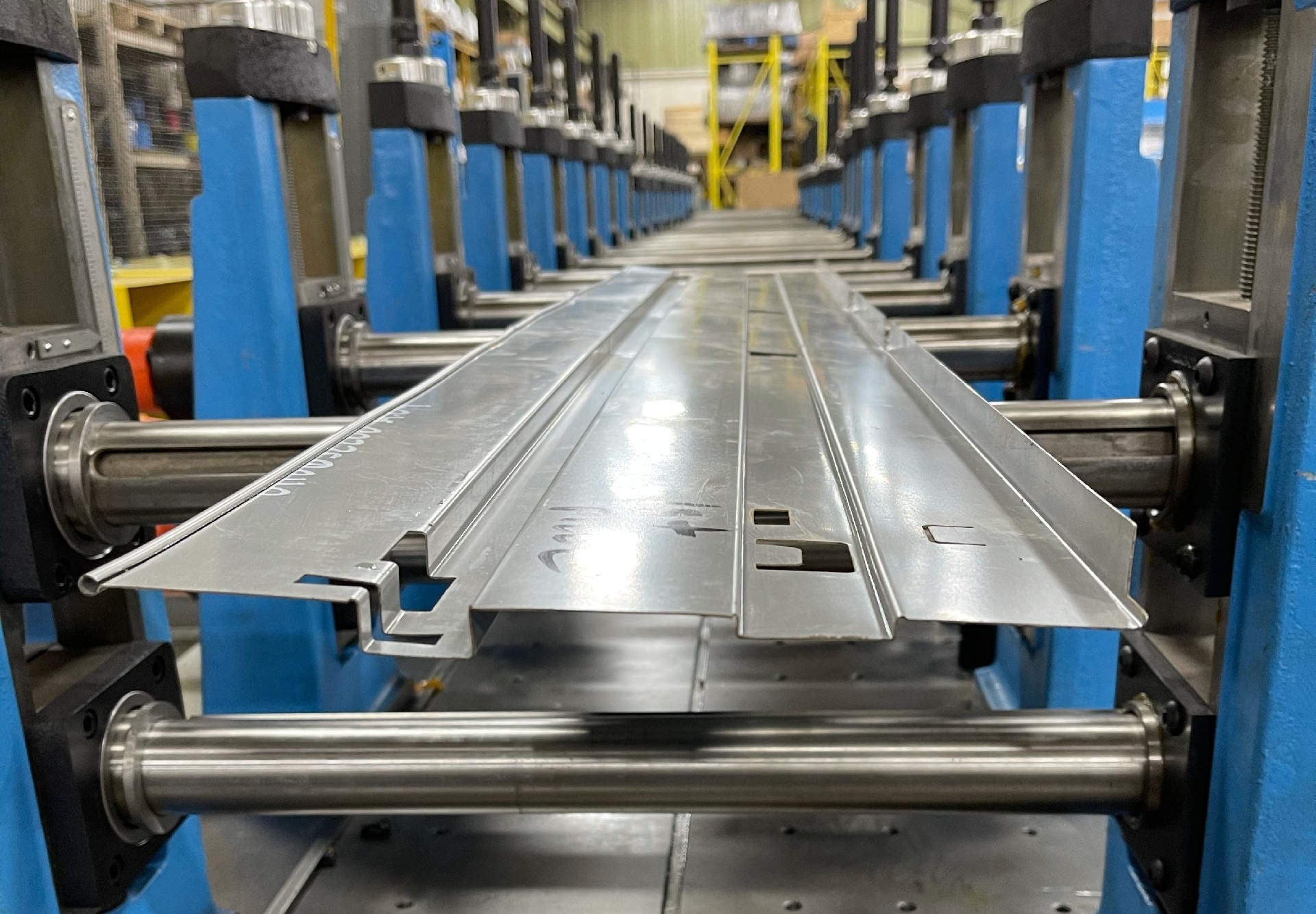Fabricators might be wondering if there is a definitive answer: which is better, pre-cut or post-cut roll forming? However, there isn't one process that's better than the other in every situation.
Is Pre-Cut or Post-Cut Better for Your Shop?
Pre-cut machines typically do not run over 200 feet a minute. Even then, just because the mill is doing 200 feet per minute in a pre-cut situation, that doesn't mean the actual throughput is there because we're not able to hit some of that in the start and stop with a stationary shear or some type of cutting for the pre-code or even a flying one. That throughput is not the same as if we were in a post-cut. The goal with the roll forming process is to make it continuous, without start-stop even with a post-cut system.
Unless you have an automatic de-stack system for pre-cut that's going to load the parts and send them down automatically, you will need at least two operators to run the machine if you're not coming from coil (using blanks). If it's a coil-run line, you may need only one operator.
Part Length Considerations
The minimum length of your product can determine which type of cut you'll need. With a pre-cut system, you can make simple cuts as small as one inch, or two to three inches if your product requires it. This presents an advantage over post-cut for some fabricators. You are not bound by the three horizontals, even if it's a small inch mill, shaft mill, or have close horizontals or far away. You are not limited to that minimum part.
When forming tall parts, pre-cut can be more difficult to control. You will want to have close centers for pre-cut because that would help with minimum length. It can be tough to form smaller part in a big roll former. Taller parts require larger horizontal centers. Otherwise, you're going to need more stations and move it slower. So if you take for example a six inch leg, and you may do it in 16 stations from coil at 25%, depending on horizontals, could be 50% more stations if the centers are close.
Converting your Forming Line
Converting from a pre-cut line to post-cut is an easier process because you already have more passes, as long as the geometry is not prohibitive. Doing a pre-cut system with a standalone mill can be the first step into becoming a roll former. If you already have the machine, you'll just need to add the front end uncoiler straight or feeder, or the post process of a press and die.
In general, a roll forming operation only consumes, if you look at the total cost of the part, only about 7%. Compare your material costs and your direct labor costs to that. Material cost is the bigger portion of it. Labor is a very small part of it because it's a very efficient process, whereas if you take a press brake, for instance, your throughput is so much greater in a roll former than it is a press brake, so labor becomes a bigger component of your total cost.



